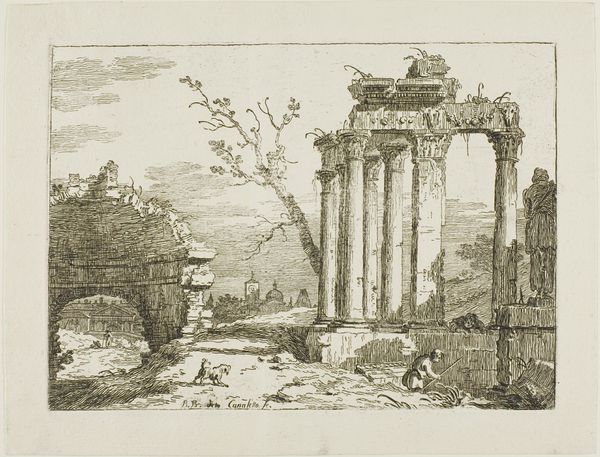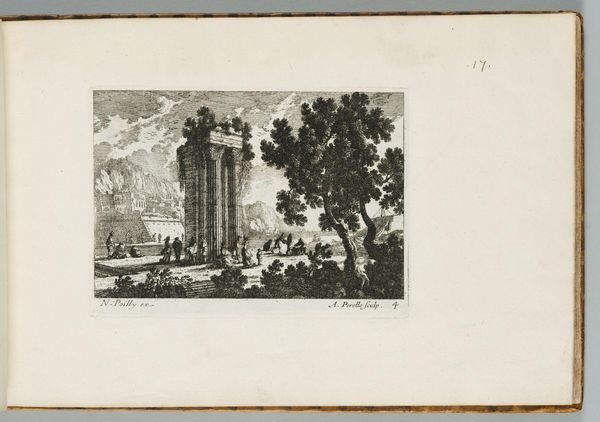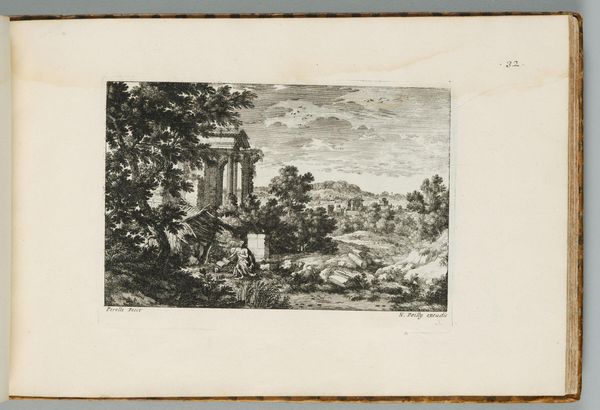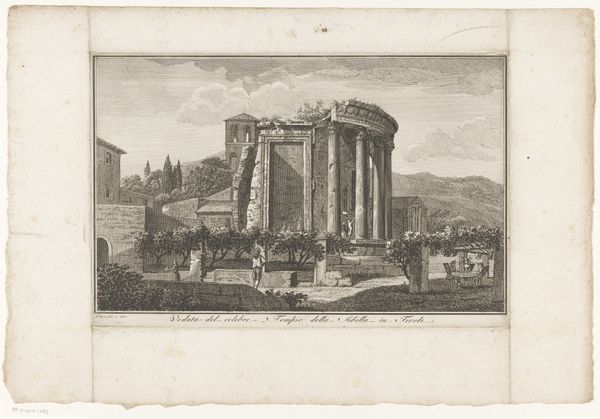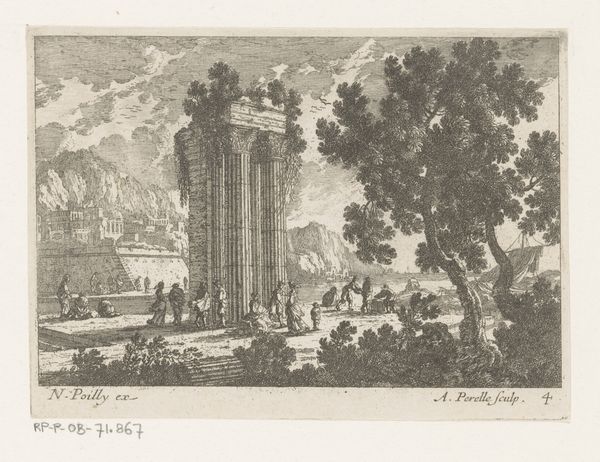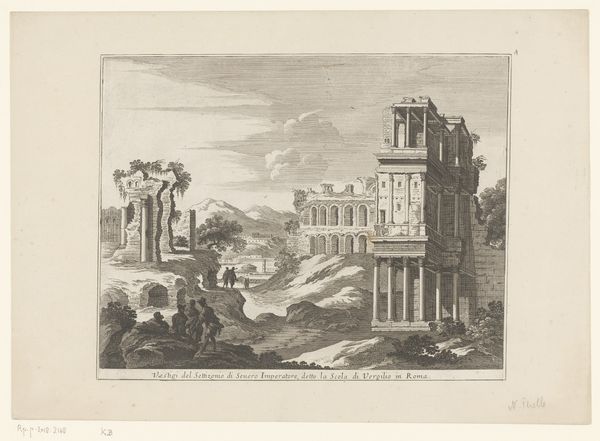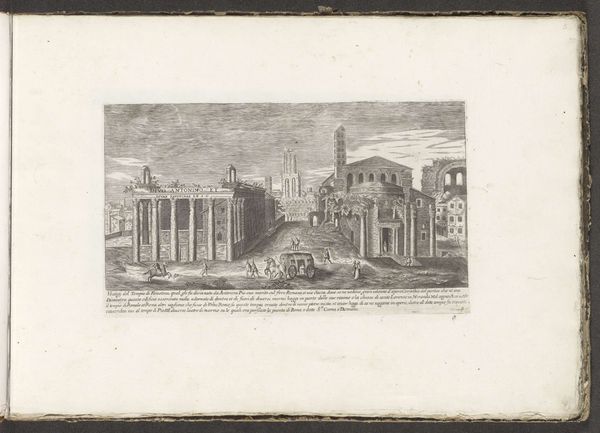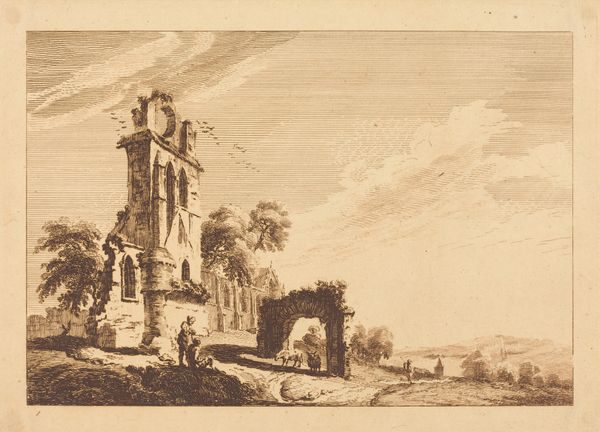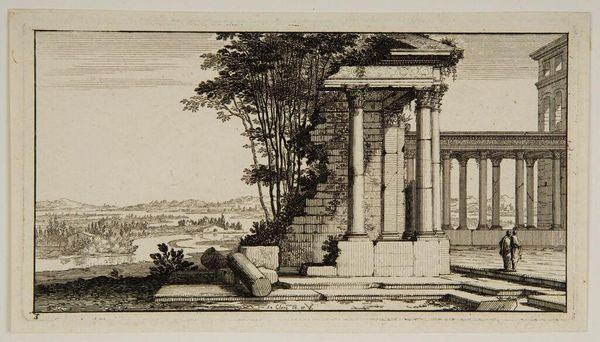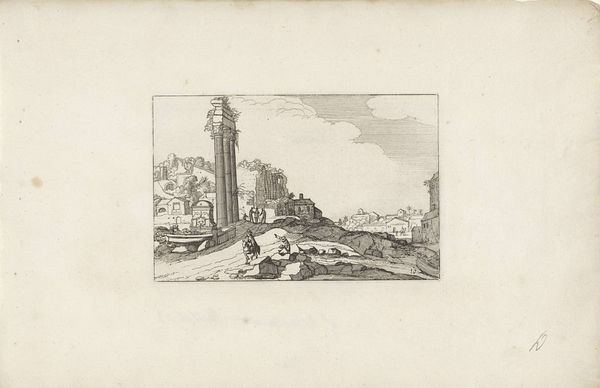
Tempel van Castor en Pollux en de Basiliek van Constantijn 1618
0:00
0:00
claesjanszvisscher
Rijksmuseum
drawing, print, ink, engraving
#
drawing
#
baroque
# print
#
landscape
#
ink
#
cityscape
#
engraving
Dimensions: height 103 mm, width 156 mm
Copyright: Rijks Museum: Open Domain
Editor: This is Claes Jansz. Visscher's "Tempel van Castor en Pollux en de Basiliek van Constantijn," from 1618, created using engraving and ink. There's such intricate detail within a relatively small space; it feels both grand and intimate. How might we interpret its lasting appeal, considering the context in which it was produced? Curator: Well, let's consider the labor involved in its production. Think about the engraver, meticulously carving these lines into a copper plate. Each stroke, each tiny detail reflects a conscious decision, a specific skill being deployed. This wasn’t some mass-produced image; it was a crafted object meant for consumption in a specific market. Does understanding the printing process influence how you engage with the artwork? Editor: It definitely does. I hadn’t thought so directly about the hand involved, the skilled labor creating something reproducible, almost blurring the lines between art and industry. The details do seem incredibly important now. Are they trying to capture some ideal of Rome through it's materiality? Curator: Precisely! Consider how Visscher utilizes linear perspective – how does that choice reinforce specific notions of order, power, and control associated with Rome at this time, or maybe even comment on its loss of these notions? Are the ruins portrayed as simple historical sites, or are they deployed as part of an appeal for a renewed Rome that would revive materialist markets? Editor: So, it’s less about an idealized romantic view, and more about understanding Rome through the processes that depicted it? And understanding it as an actual *thing*, a valuable artifact being consumed? Curator: Exactly. By looking at the materials and techniques employed, and the context of production, we move beyond just appreciating its beauty, to understanding its role in a broader network of social, economic, and cultural practices. Editor: That really shifts my understanding. I was initially caught up in the romantic ruins. But now I see it more as a commodity. Curator: Seeing the physical effort behind an artwork transforms our view from just the aesthetic. It prompts us to question who made it, for whom, and to what end. Editor: I’ll definitely think about the "how" as much as the "what" moving forward. Thank you!
Comments
No comments
Be the first to comment and join the conversation on the ultimate creative platform.

